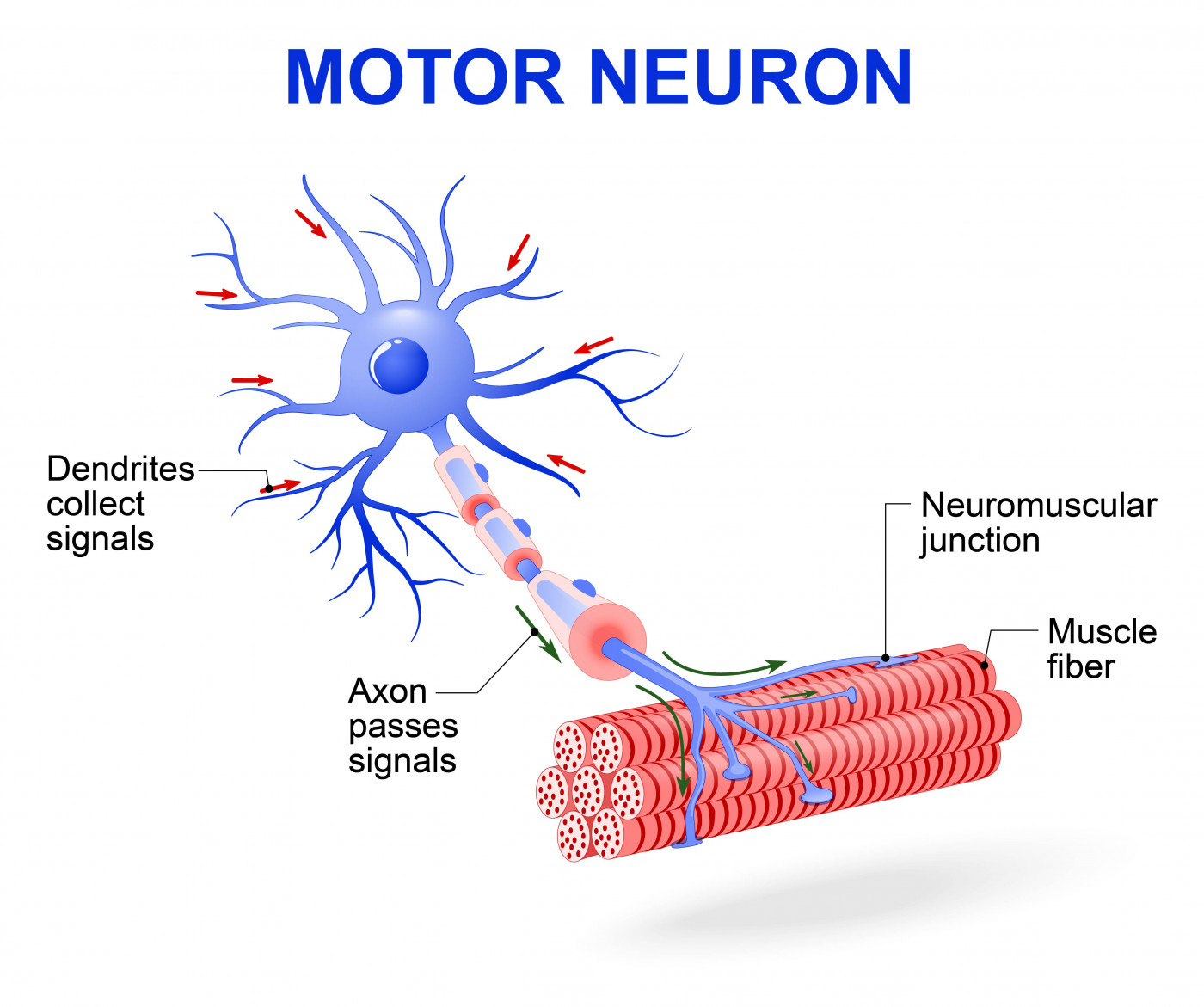Using Skin Cells, Scientists Create Human Motor Neurons in Study

A cocktail of two microRNAs and two transcription factors is enough to transform human skin cells directly into motor neurons, scientists report — an achievement of potentially considerable importance in understanding such motor neuron diseases as spinal muscular atrophy (SMA).
The study, “MicroRNAs Induce a Permissive Chromatin Environment that Enables Neuronal Subtype-Specific Reprogramming of Adult Human Fibroblasts,” appeared in the journal Cell Stem Cell.
Motor neurons are nerve cells of the central nervous system that transmit signals from the spinal cord to muscles to help them contract. Damage to these cells underlies several devastating and paralyzing diseases, from SMA to amyotrophic lateral sclerosis or ALS.
Scientists have struggled to grow human motor neurons in the lab for research purposes, which is one reason this work is so notable. Researchers at the Washington University School of Medicine in St. Louis, Missouri, were able to convert skin cells from healthy adults into motor neurons. Importantly, this process also didn’t require skin cells to change into stem cells before becoming motor nerve cells.
A technique that requires stem cell state often raises ethical issues, as is the case with pluripotent stem cells. These cells are similar to embryonic stem cells due to their ability to become any adult cell within the body. Moreover, cells that don’t need to undergo a stem cell state are the same age as their cells of origin — in this case, skin cells — and consequently, the same age as the patient whose skin was used to create the motor neuron cells.
“Going back through a pluripotent stem cell phase is a bit like demolishing a house and building a new one from the ground up,” Andrew S. Yoo, the study’s lead author and an assistant professor of developmental biology at Washington University, said in a press release. “What we’re doing is more like renovation. We change the interior but leave the original structure, which retains the characteristics of the aging adult neurons that we want to study.”
The science behind converting skin cells into motor neurons is linked to two small RNA molecules, called microRNAs, which are particularly rich in the brain. Previous research by Yoo and colleagues, while at Stanford University, showed that microRNA-9 and microRNA-124 were important in remodeling the genome so as to induce a neuronal state in cells.
In the current study, Yoo’s team further investigated the role of these microRNAs and how they help convert skin cells into motor neurons. It found that both microRNAs assist cells in holding at a stage where they are ready to convert to neurons. But they were inactive and need more help. After extensive research, researchers identified two transcription factors — ISL1 and LHX3 — were the missing link. Once added to the mix, skin cells turned into spinal cord motor neurons in about 30 days.
The four factors — microRNA-9, microRNA-124, ISL1 and LHX3 — help cells shed their skin cell “genetic identity” and embrace instructions that lead them to becoming motor nerve cells, scientists said.
The converted motor neurons showed a similar genetic profile — in terms of gene activation and how they work — to mouse motor neurons. How well their genetic profile compares to human motor neurons is still a question, because these cells are very difficult to obtain from living adults. Future studies with neuron samples from deceased patients will let researchers determine how well their converted motor neurons match natural human motor neurons.
“Our research revealed how small RNA molecules can work with other cell signals called transcription factors to generate specific types of neurons, in this case motor neurons,” Yoo concluded. “In the future, we would like to study skin cells from patients with disorders of motor neurons. Our conversion process should model late-onset aspects of the disease using neurons derived from patients with the condition.”







